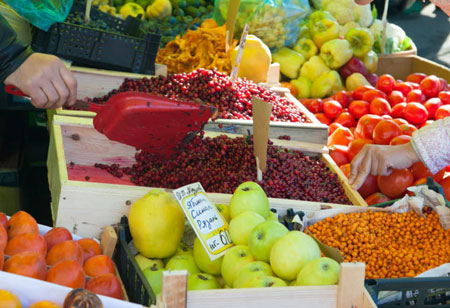THANK YOU FOR SUBSCRIBING
Be first to read the latest tech news, Industry Leader's Insights, and CIO interviews of medium and large enterprises exclusively from Food and Beverage Tech Review
Can Companies Leverage Technologies to Improve Food Safety?
The food safety environment will have to go through a different process to handle as well as manage the level of pathogens.

By
Food and Beverages Tech Review | Tuesday, November 12, 2019
Stay ahead of the industry with exclusive feature stories on the top companies, expert insights and the latest news delivered straight to your inbox. Subscribe today.
The food safety environment will have to go through a different process to handle as well as manage the level of pathogens.
FREMONT, CA: Food safety is a rising concern for consumers today. Individuals are developing a certain level of consciousness regarding what they eat, where it comes from, how pure it is, and so on. Irrespective of the care that the consumers put into buying quality foods, foodborne illnesses still manage to make their presence national news. Fortunately, technological developments have immense potential for enhancing food safety.
Predictive Analytics:
The expansion of digital media has created an enormous platform where all information is available about the past foodborne outbreaks. With big data analytics, scientists have revealed different patterns and indicators of foodborne diseases. The data collected from previous outbreaks helps in detecting the source of the pathogens quickly from spreading further. It considered that web mining and social media analysis is created to take advantage of the data as an early warning system for figuring out potential health and food safety issues. Big data analytics lends a hand in capitalizing on massive amounts of data, as well.
Blockchain:
To build a supply chain visibility, companies have implemented blockchain technology after the outbreaks. Many computers have their database stored, which is not connected to the internet, leading to a zero cybersecurity risk. The digital ledger is exceptionally safe as the users having the cryptography key can only access the available data. The level of security is significant because it makes sure that data is accessible for the public to view, while also securing the credibility of the information. Companies will be able to utilize the blockchain technology to monitor and identify the contaminated foods within the supply chain journey to protect other goods from exposure.
UV Light:
It is an open secret that society loves quick ready-to-eat meals, which now have an increased pressure on the industry to take up preservation and pasteurization techniques. The method is followed by sanitization of the products as well as has minimal bacteria exposure. Infrared heating has turned out to be the industry preference for pasteurization, especially for meats, where the radiations of the lamps kill the surface bacteria and contaminants before final packaging.
I agree We use cookies on this website to enhance your user experience. By clicking any link on this page you are giving your consent for us to set cookies. More info








